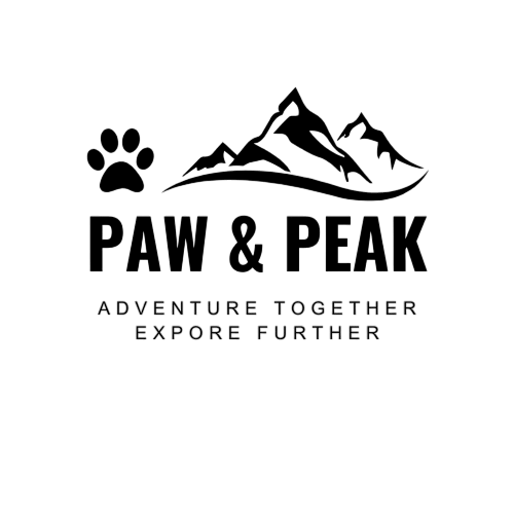Adventure Photography: Capturing Perfect Moments with Your Pet


Products That Elevate Pet Adventure Photography
Peak Design Capture Clip - Secure, accessible camera mounting for quick access during active moments. https://amzn.to/4c9TK2k
GoPro Fetch Dog Harness - Capture your adventure from your pet's perspective. https://amzn.to/3XDQkiv
Lume Cube Panel Mini - Portable lighting for low-light adventure conditions. https://amzn.to/42nEr2K
Manfrotto PIXI Mini Tripod - Lightweight, stable support for self-portraits with your pet. https://amzn.to/3FQect9
The golden afternoon light bathed the alpine meadow in perfect photographic conditions as my border collie, Skye, raced joyfully through wildflowers. I raised my camera, composed the shot—and watched her immediately stop, turn toward me, and strike an unnatural "camera pose" that completely destroyed the authentic moment I'd hoped to capture. This common frustration among adventure pet photographers highlights the unique challenges of documenting outdoor experiences with animals who respond to our behavior in ways human subjects typically don't. Through years of trail photography with various pets, I've developed approaches that transform these challenges into opportunities for images that authentically capture the spirit of outdoor adventures shared with our animal companions. The most compelling pet adventure photography doesn't just document activities—it communicates the emotional connection, sensory joy, and shared discovery that make pet adventures uniquely rewarding.
Technical preparation creates the foundation for successful adventure pet photography. Unlike controlled studio environments, trail conditions demand equipment choices that balance quality against practicality. My personal system centers on a weather-sealed mirrorless camera with a versatile 24-70mm zoom lens that handles most adventure scenarios without requiring lens changes that risk sensor dust or missed moments. The Peak Design Capture Clip has revolutionized my trail photography by securing the camera to my backpack strap for instant access without neck strain or swinging equipment during active hiking. Essential accessories include a lightweight tripod for low-light conditions, a polarizing filter for managing harsh outdoor contrast, and a lens cleaning kit protected in weatherproof storage. Equally important is streamlining this kit to ensure that photography enhances rather than dominates the adventure experience—when photography equipment begins to reduce your or your pet's enjoyment, the resulting images rarely justify the compromise, regardless of their technical quality.
Behavior management techniques specifically developed for adventure photography have dramatically improved my success rate for authentic action images. The "transparent photographer" approach involves desensitizing your pet to the camera through gradual exposure, teaching them that the camera doesn't necessarily signal posed "photo time." I regularly practice handling my camera, raising it to shooting position, and even taking photos during ordinary activities without making any special requests of Skye, gradually teaching her to ignore rather than respond to photography behaviors. For action sequences, pre-positioning proves more effective than chasing moments—finding promising locations, establishing camera settings, and then encouraging natural behavior rather than trying to simultaneously direct activity and manage photography. The "adventure first, photography second" philosophy prioritizes genuine experience over manufactured moments, recognizing that pets instantly detect and respond to our attention shifts. Some of my most successful images emerged when I mentally committed to enjoying an activity without photography, then organically incorporated the camera only when truly exceptional moments developed.
Composition strategies for adventure pet photography differ significantly from standard landscape or portrait approaches. The most compelling images typically incorporate three essential elements: the pet, environmental context that establishes the adventure setting, and subtle indicators of the human-animal connection that distinguish adventure photography from wildlife photography. Traditional photography rules like the rule of thirds apply differently when capturing moving animals—I generally compose with extra space in the direction of movement or gaze, allowing the image to communicate motion and intention. Perspective dramatically impacts the emotional quality of adventure images; shooting from pet-level height rather than human standing position immediately creates more immersive images that invite viewers into your pet's experience rather than merely observing it. Environmental framing elements—trail corridors, rock formations, or tree clusters—can naturally direct attention to your pet while providing location context, particularly valuable when animal coloration might otherwise blend into background elements.
Post-processing approaches for adventure pet photography benefit from specific techniques that address common challenges. Focus stacking software helps manage situations where depth of field limitations forced choosing between perfectly sharp pet features and environmental context. Localized adjustment tools correct for the exposure challenges of photographing black dogs against snow or light-colored pets against dark forest backgrounds. Perhaps most importantly, thoughtful editing preserves the authentic feeling of the adventure rather than creating idealized representations—I intentionally retain evidence of genuine experience like mud-splattered fur or imperfect weather conditions that communicate the lived reality of outdoor adventure. The final consideration involves presentation choices that honor both the adventure and the relationship—rather than pursuing social media approval through heavily filtered or artificially composed images, I create collections that authentically document our shared experiences, acknowledging that the most meaningful audience for these images isn't online strangers but future versions of ourselves revisiting cherished memories of adventures shared with beloved companions who accompany us for such a brief portion of our lives.
Adventure Together. Explore Further. Paw and Peak.
Join Our Pack
Whether you're scaling peaks with your pup, camping with your cat, or simply enjoying local trails with your animal companion, you're part of our community. Follow our social channels for more information, share your own journey using #PawAndPeakAdventures.
The trail is calling—and this time, both you and your pet will be perfectly equipped for the journey.
Adventure Together. Explore Further. Paw and Peak.
Subscribe to Our Newsletter!
© 2025. All rights reserved.
